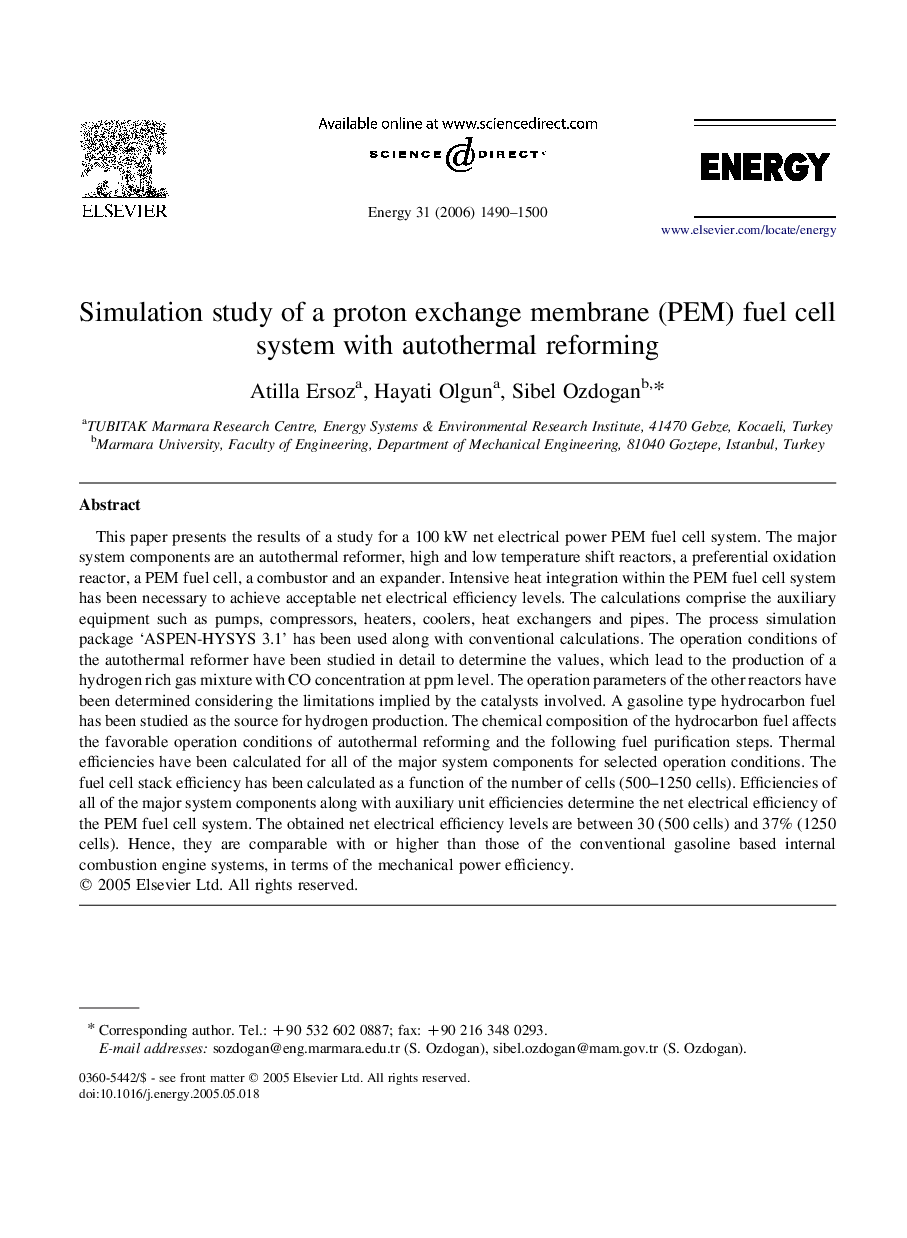| کد مقاله | کد نشریه | سال انتشار | مقاله انگلیسی | نسخه تمام متن |
|---|---|---|---|---|
| 1736497 | 1521499 | 2006 | 11 صفحه PDF | دانلود رایگان |

This paper presents the results of a study for a 100 kW net electrical power PEM fuel cell system. The major system components are an autothermal reformer, high and low temperature shift reactors, a preferential oxidation reactor, a PEM fuel cell, a combustor and an expander. Intensive heat integration within the PEM fuel cell system has been necessary to achieve acceptable net electrical efficiency levels. The calculations comprise the auxiliary equipment such as pumps, compressors, heaters, coolers, heat exchangers and pipes. The process simulation package ‘ASPEN-HYSYS 3.1’ has been used along with conventional calculations. The operation conditions of the autothermal reformer have been studied in detail to determine the values, which lead to the production of a hydrogen rich gas mixture with CO concentration at ppm level. The operation parameters of the other reactors have been determined considering the limitations implied by the catalysts involved. A gasoline type hydrocarbon fuel has been studied as the source for hydrogen production. The chemical composition of the hydrocarbon fuel affects the favorable operation conditions of autothermal reforming and the following fuel purification steps. Thermal efficiencies have been calculated for all of the major system components for selected operation conditions. The fuel cell stack efficiency has been calculated as a function of the number of cells (500–1250 cells). Efficiencies of all of the major system components along with auxiliary unit efficiencies determine the net electrical efficiency of the PEM fuel cell system. The obtained net electrical efficiency levels are between 30 (500 cells) and 37% (1250 cells). Hence, they are comparable with or higher than those of the conventional gasoline based internal combustion engine systems, in terms of the mechanical power efficiency.
Journal: Energy - Volume 31, Issues 10–11, August 2006, Pages 1490–1500